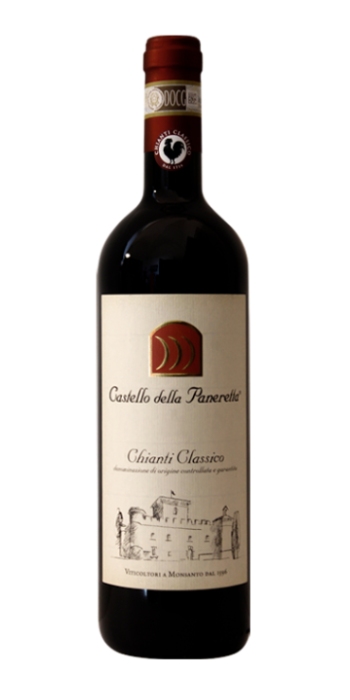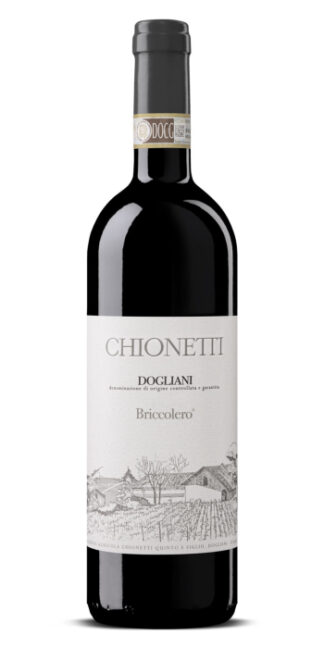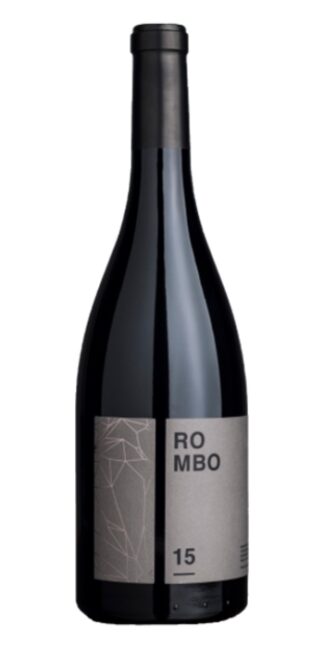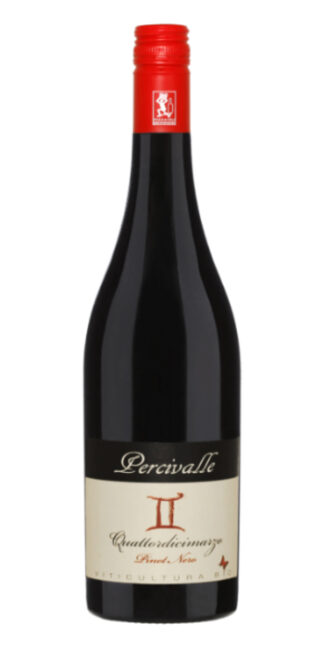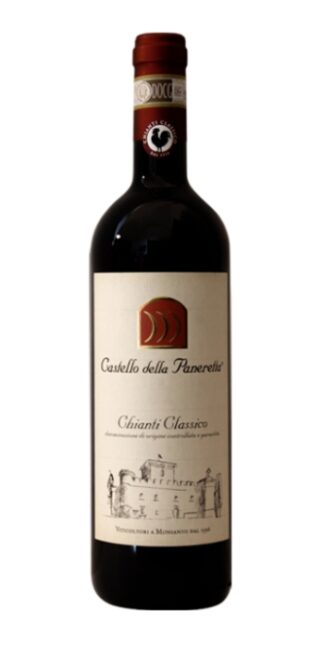Description
Chianti Classico 2019 Castello della Paneretta
Variety: Sangiovese 85%, Merlot 10% e Canaiolo 5%
Ruby red color
The nose is clean, precise and immediate in its manifestation. The red stem fruit, such as cherry and black cherry, some traces of wild, shrub berries and tobacco.
On the palate it is in excellent balance between hardness and softness. Consistent and well designed, it has in the tannic presence and in the subtle mineral texture a valid aid to shelf life, and the ability to adapt to multiple foods.
Overall, Tuscany can boast a Chianti Classico with clean and traditional aromas, which stands out for its ease of drinking.
Chianti Classico 2019 Castello della Paneretta
The type of training is divided between spurred cordon and espalier with guyot pruning.
After the harvest, it carries out the alcoholic fermentation in stainless steel containers at a controlled temperature of 27/28 ° C for 10/12 days.
Ages in oak barrels of 30 and 50 hectoliters for 12 months.
The Paneretta Castle has very ancient origins, which date back to the battle of Montaperti in 1260. With a total area of over three hundred hectares, 22 of which are vineyards, it is one of the largest farms in the area.
Based on the type of soil we can divide the body of the vineyards into three different areas.
The Terrine, Torre a Destra, Torre a Sinistra vineyards have clay with a large amount of light galestri and limestone formations. The strata are arranged in the direction of the hill and the rocky outcrops are weak. Soils are light ocher, little eroded and have an extraordinary physical balance. Full-bodied and well-structured wines are extracted from these soils.
The Ciliegio, Bossolo and Barbiano vineyards have layers of purplish red schistose clays alternating with deposits of clayey and loamy soils. The wines of these lands are produced leaner wines, but with greater finesse.
Finally, from the Querciole and Poggio vineyards They are semi-flat soils located on top of the hills. Here we can observe the process of ancient formation dating back to climatic eras of a completely different nature, where the aggression of iron and aluminum on the limestone banks, gave rise to deeper and stronger soils. The position of these lands combined with their exposure there protected from washout and made more generous.
